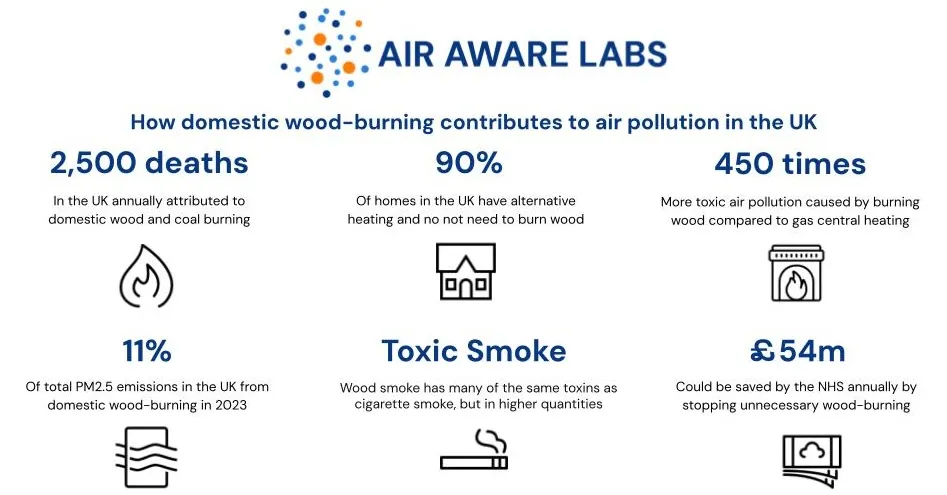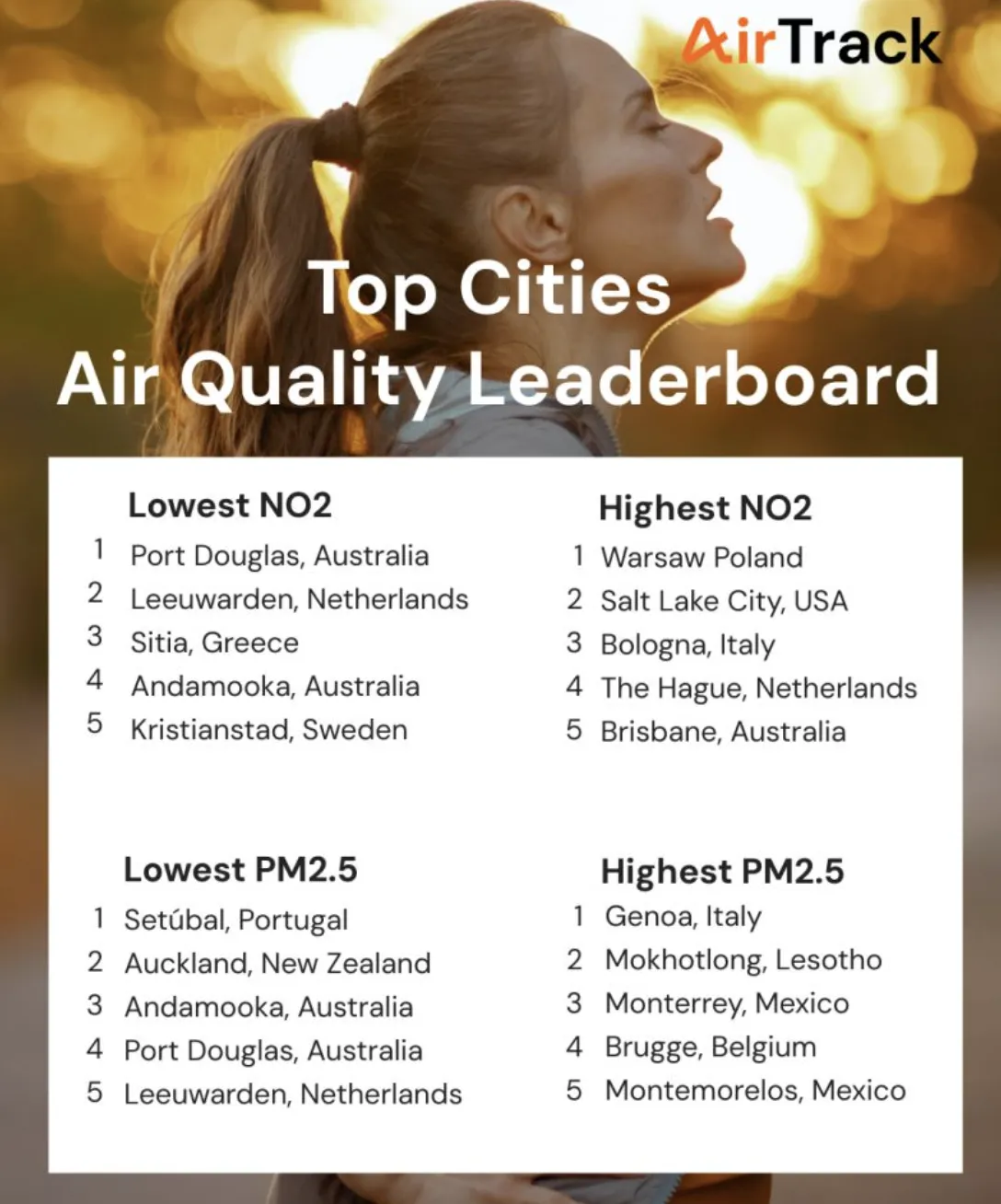Wood burning and air pollution

Imagine sitting beside a cosy wood-burning fireplace, the flames crackling softly, casting golden shadows all around, and the smell of smoke gently filling the room. This image evokes a sense of comfort rooted in historical charm, but as wood-burning stoves grow in popularity again, experts warn that this heat source might not be as environmentally friendly as it seems at first glance. The good news? Awareness about the adverse effects is increasing, and cleaner alternatives are available today.
The UK has made substantial progress in cleaning up its air quality over the past century. This is largely due to the switching from coal and other solid fuels to electricity and gas, which have dramatically reduced pollution (pp. 400-401). The Chief Medical Officer’s Annual Report 2024 says, “An enthusiasm for wood burners has reversed this positive trend … particularly in affluent areas” (pp. 400-401). In the winter and weekend evenings, PM2.5 levels spike as people light fires more frequently on cold days and weekend nights. This negative effect on both indoor and outdoor air quality is seen especially in cities, where the high population density means small emissions from each household add up quickly.
Greenwashing
Wood stoves are often marketed to appear clean and efficient. Words like “eco” and “low emission” are used to market these stoves in a way that appeals to environmentally conscious consumers. Most recently in the UK, the Advertising Standards Authority (ASA) banned adverts claiming modern stoves are “very low emissions” for being misleading and ill-founded. Campaigners argue against these embellished narratives, saying they amount to greenwashing: “Wood burners are not a clean or green way to heat your home … industry narratives to the contrary are misleading,” says Larissa Lockwood. Even the newest “eco” stoves on the market produce 450 times more toxic air pollution than gas central heating. The ASA’s ruling exposes how environmental marketing can obscure the effects of domestic burning.
The science of wood smoke
Many people are surprised to learn that wood smoke shares many of the same toxins as cigarette smoke, but in higher quantities. Exposure to wood smoke can lead to respiratory, cardiovascular, and developmental harm, mirroring the effects of secondhand cigarette smoke. The scientific evidence is absolute; inhaling wood smoke is identical to passive smoking in its risk of leading to serious health problems. It is estimated that a shocking 2,500 deaths in the UK are attributed to the burning of wood and coal within homes. Additionally, it is estimated that eliminating unnecessary wood burning could save the NHS £54m annually. The UK’s Chief Medical Officer emphasises the harm in dense urban areas, where high levels of fine particulate matter (PM2.5) can disproportionately affect vulnerable populations such as children and the elderly. This makes the consideration of wood burning a key environmental issue to tackle.
The potential for change
The UK Department for Environmental, Food, and Rural Affairs reports that household woodburning contributed to 11% of the UK’s total PM2.5 emissions in 2023. This statistic is surprising considering most people who burn wood in their homes do it for aesthetic reasons, and 90% have alternative heating. Looking ahead, the challenge of air pollution from wood-burning stoves shows an opportunity to rethink how we heat our homes. Urban areas, which are especially sensitive to poor air quality, show how choices around domestic heating can have a significant impact on public health. As of 2025, the UK government has introduced stricter regulations and fines to limit the environmental impacts of wood-burning stoves. All new stoves within the UK must meet ecodesign standards, and it is illegal to burn coal (except smokeless anthracite) or wet wood at home. There are smoke control areas, where wood burning is further restricted, requiring DEFRA-exempt stoves or smokeless fuels to reduce pollution. Local councils can issue fines ranging from £175 to £1000 for improper stove use. Repeat offences could result in potentially going to criminal court. Some campaigners, such as Mums for Lungs, advocate the total phasing out and clear labeling of stoves as harmful; current policy focuses on regulating stove design, fuel use, and compliance enforcement to protect air quality.
At Air Aware Labs
Air Aware Labs is committed to reducing air pollution, including that which comes from wood-burning. Our recent partnership with Global Action Plan helps outline how businesses can reduce their environmental footprint. Through Responsible 100’s mission to empower UK businesses to optimize their positive environmental impact, we are able to help educate more people on the negative effects of different sources of air pollution: “Common sources of outdoor and indoor air pollution include heating and cooking devices, motor vehicles, industrial facilities and forest fires…” By embracing cleaner heating technologies and continued regulation, we can move towards a cleaner future where our health is protected and our homes are warm.
Caroline Graybill overseen by Lia Budnik


.svg)










